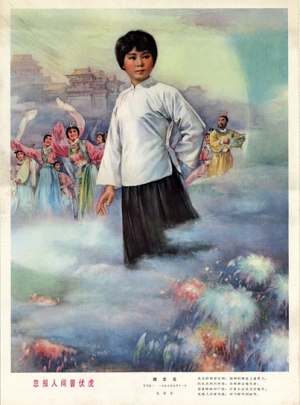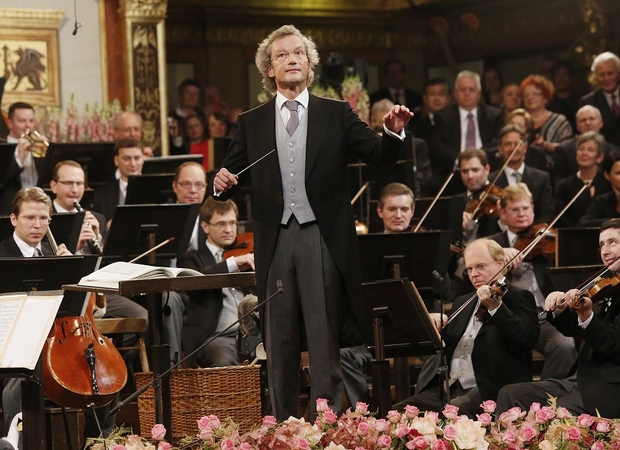Yang Kaihui—who was killed 85 years ago this month—was the first of Mao Zedong’s three freely chosen wives. (Mao was forced by his parents to wed an older neighbor when he was just 14 but did not consider this a true marriage.) Yang’s dramatic, and tragic, life story is widely known in China. It has been turned into dance dramas, like the China National Opera & Dance Drama Theater’s 2015 When We Were Young, and figured prominently in films, including a 1995 biopic and the star-studded 2011 Birth of a Nation, in which the role of Yang was performed by Li Qin. It has inspired fiction, including Qiu Xiaolong’s 2009 Inspector Chen novel, The Mao Case; propaganda paintings, notably a late-1970s series by Li Mubai and Jin Xuechen; and poetry, the most famous of which is Mao’s 1957 “Reply to Li Shuyi” in which he compares his departed wife to Chang’e, an immortal on the moon.

Mao’s poem for his wife—which begins with the line “I lost my proud poplar,” a play on her surname—is wistful, powerful, and personal. Its borrowing of the legend of Chang’e (and Wu Gang, who also lives on the moon, doomed to a Sisyphean existence in which he chops down the same 5,000 foot, self-regenerating cassia tree for all eternity) is successful. It is a poem that will likely stand the test of time. But the mythology Mao used to evoke his wife has also served to cloak the real facts of her life, and her death—as have the many other versions of her story. Indeed, so effective is the legend of Yang Kaihui that it is increasingly hard to unearth the real person. But it is an effort worth making.
Yang Kaihui was born on November 6, 1901, in Bancang, on the outskirts of Changsha, Hunan province. Her mother was Xiang Zhenxi and her father was Yang Changji, a progressive scholar who viewed Confucianism as a universal truth but also embraced Western humanism. He left to study abroad soon after his daughter’s birth, with the goal of immersing himself in “world knowledge in order to guide society.” Yang studied in Tokyo until 1909 and then spent three years at the University of Aberdeen, in northeast Scotland, followed by a year in Berlin. In 1913, he returned home to teach at the Hunan First Normal School where one of his students was Mao Zedong. The young Mao learned about Kantian ethics and idealism from Yang—who argued for a middle ground between individualism and collectivism that he called “public-minded individualism”—and also about the importance of physical education. It was while studying with Yang that Mao began to take long hikes in the countryside, and to develop his lifelong love of swimming.
Yang Kaihui was raised primarily by her mother, who sent her to the local school—at which she was the first female student—and later to the Number One Changsha Girls School. Her father, who in 1915 wrote an article praising free marriage and equal rights for women, began to educate his daughter himself after his return home. In 1918, Yang Changji accepted a job teaching at Peking University and the family moved to Beijing. Mao, who was then a searching, even aimless young man, borrowed money from friends and headed north himself. He sought out Yang Changji—who he later said “had made a great impression on me in my youth and afterwards was a genuine friend”—and Yang found him a job in the university library. It was during this time, Mao told Edgar Snow, that he “fell in love with Yang Kaihui.”
Sadly, Yang Changji died in Peking in 1920; his wife and daughter took his body back to Bancang to bury it and mourn. Mao went back to Hunan, too, to run a primary school, dabble in Marxist activities, found the Cultural Book Society (in space rented from Yale University), and—interestingly enough— advocate Hunan independence and the establishment of the “Republic of Hunan” (which, he said, would “shine like the rising sun”). Yang and Mao were married by year-end and soon had three sons—Anying, Anqing, and Anlong.
Culture
02.10.14
Will Xi Jinping Stop the Music?
Yang worked closely with Mao and became one of the first members of China’s Communist Party. But, by 1927, Mao’s increasingly important role, which included leading Red Army forces from Jinggangshan to Ruijin with Zhu De, led to their separation. The White Terror—Chiang Kai-shek’s attack on the Communists with whom the Guomindang (KMT) had been cooperating—began that same year, making it impossible for the pair to reunite. By 1928, Mao had already found and apparently wed his next wife, He Zizhen. In 1930, Li Lisan and the Moscow-educated wing of the Communist Party, with whom Mao had been at odds, ordered an attack on Changsha, which Mao reluctantly agreed to carry out. The Communists lost badly and on October 24, 1930—Anying’s eighth birthday—Yang Kaihui was arrested by He Jian, the local KMT warlord, for the “crime” of being Mao’s wife. She was thrown in jail with her oldest son and a nanny and executed on November 14.
Beyond these basics, there are many stories, but it is sometimes hard to determine the line between fact and fiction—or the extent to which politics determines what we know. Stories of Yang Kaihui were largely suppressed during the Mao era, while his third wife Jiang Qing was alive. They were brought out in spades in 1977 after the overthrow of the Gang of Four, used to criticize and condemn Jiang Qing by comparison.
By all accounts, Yang and Mao were much in love. The Mao biographer Philip Short writes, “perhaps for the only time in Mao’s life, he had a truly happy family to come home to.” Edgar Snow notes that their marriage was “celebrated as an ‘ideal romance’ by radical youths in Hunan” and that they were “evidently very devoted.” Most versions of Yang’s arrest—including a May 11, 1977 Liberation Army Daily article written by her brother, Yang Kaizhi—agree that she was given the opportunity to go free if she would repudiate Mao, but refused and chose execution instead. Her youngest child died soon after and the oldest two were left to fend for themselves on the streets of Shanghai until the Communist Party could rescue them and send them to Moscow for schooling.
In 1982, a cache of Yang Kaihui’s writings were said to have been discovered in her former house during renovations, secreted behind walls and in ceilings, damaged by insects, water, and time, but still legible. In their controversial book Mao: The Unknown Story, Jung Chang and Jon Halliday quote extensively from these writings, which detail Yang’s love of Mao; proclaim her support of feminism; and allude to her angst over Mao’s alleged affairs. In 2006, the magazine of the Hunan Museum published these writings with an introduction by Ou Jinlin; transcripts and images of the documents can be found online. The delay between discovery and publication is left unexplained, leaving the reader to wonder if this is attributable to debate over their authenticity or the direction of the political winds.
The stories of Yang’s death have varying embellishments. According to her brother, Yang told a relative who visited her in jail, “Death is not important, what matters is the early success of the revolution!” and shouted “Down with the counter-revolutionary KMT! Down with Chiang Kai-shek! Long live the Communist Party of China!” right before she was shot. Several accounts say that she did not die immediately. In Chang and Halliday’s grisly story (attributed only to “records of interrogations of executioners in the 1960s, unpublished; contemporary newspaper reports; an interview with a local Party historian”), the executioners are eating lunch when someone runs to tell them she is still alive “so seven of them went back and finished her off. In her agony her fingers had dug deep into the ground.” An account by Xiang Qiong, the great-granddaughter of Yang Kaihui’s seventh uncle, says that she did not die on the first round of shots so a second round had to be fired.
In any case, Yang Kaihui’s official status as a martyr seems justified. She was a bold and courageous woman, and she married one of the most important men of the 20th century. She is worthy of further study and we can only hope that the line between the facts and fictions of her remarkable life story will one day be made clear.



